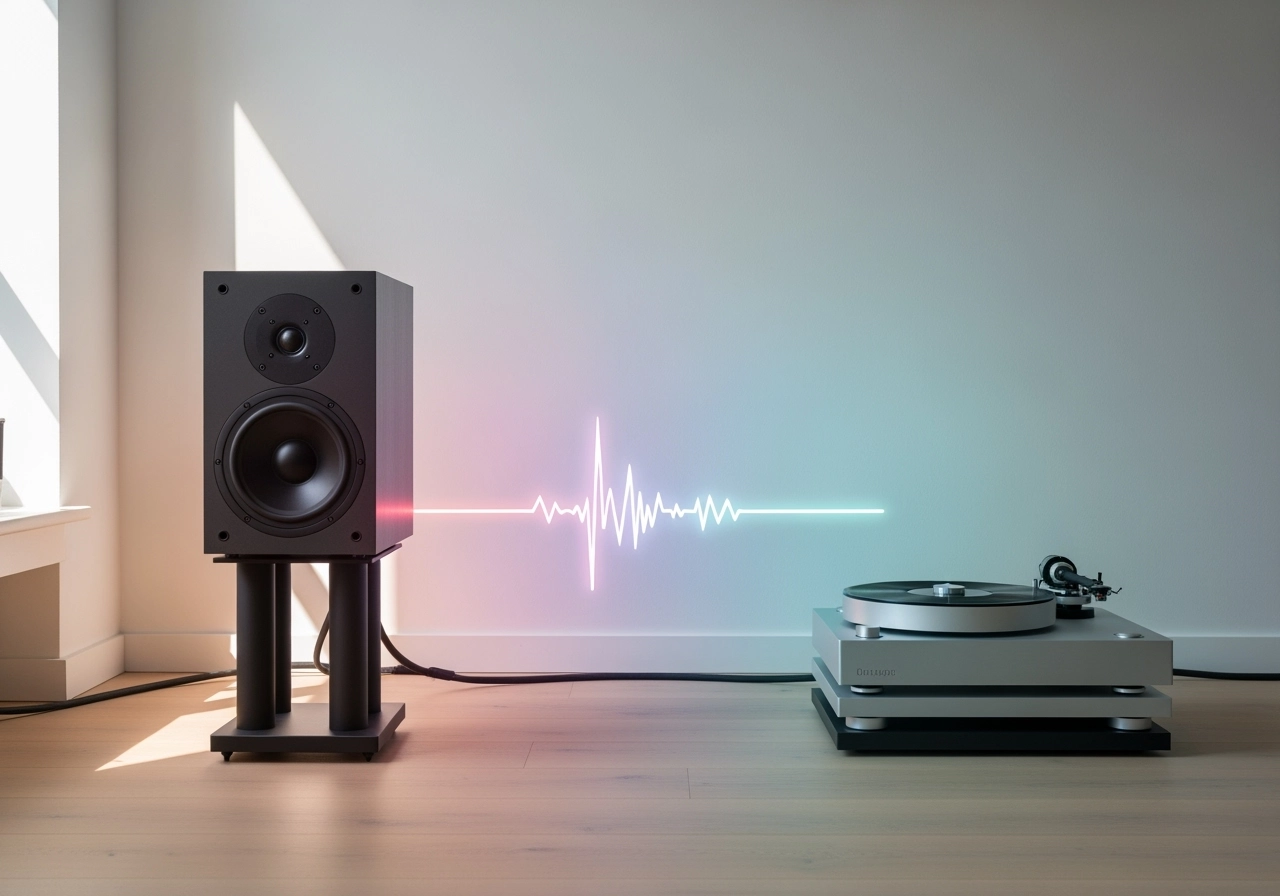Speaker vs. Component Isolation: A Complete Guide
The pursuit of pure sound in home audio often leads to the world of vibration control. While enthusiasts widely understand the need to isolate sensitive components like turntables and DACs, the role of speaker isolation is sometimes less clear. The truth is, speaker and component isolation are two distinct but complementary practices. Understanding the unique purpose of each is the key to creating a truly quiet and dynamic audio system that is free from unwanted noise and distortion.
What is Component Isolation?
Component isolation is the process of protecting sensitive electronic gear from external vibrations. These vibrations—from footfalls, a nearby subwoofer, or even the subtle resonance of an audio rack—can degrade the performance of your equipment.
- How it Works: Isolation accessories like mats, platforms, and feet are placed under components (turntables, DACs, CD players, etc.). Their purpose is to decouple the component from the surface it rests on, preventing external vibrations from traveling up into the chassis. This is particularly crucial for analog devices like turntables, where vibrations can cause the stylus to mistrack. In digital devices, it helps to reduce clock jitter, leading to a more precise and stable signal.
- Goal: The primary goal of component isolation is to create a “quiet” environment for the electronics, allowing them to process the audio signal without interference.
What is Speaker Isolation?
Speaker isolation is the process of controlling the vibrations generated by the speakers themselves. A speaker’s job is to create sound by moving air, but this movement also generates vibrations in the speaker cabinet. These unwanted vibrations can transmit into the floor or stand, causing them to resonate and color the sound.
- How it Works: Speaker isolation accessories—such as spikes, pads, and dedicated stands—are placed under the speaker cabinet. Their purpose is to either “decouple” the speaker from the floor or “couple” it to a stable, high-mass surface.
- Decoupling: Materials like high-density foam or microcell rigidized foam pads absorb and dissipate vibrational energy before it can enter the floor or stand.
- Coupling: Hard materials like metal spikes concentrate the speaker’s weight onto a tiny point, which can help to “drain” vibrational energy away from the cabinet and into a stable surface like a concrete floor.
- Goal: The primary goal of speaker isolation is to prevent the speaker cabinet from becoming a secondary source of sound and to ensure the air is moved cleanly and without floor-borne resonance. This results in a tighter, more accurate bass response and a clearer midrange.
| Feature | Component Isolation | Speaker Isolation |
| Primary Target | External Vibrations (from the room/floor) | Internal Vibrations (from the speaker cabinet) |
| Goal | Protect sensitive electronics from external noise | Control cabinet resonance and prevent sound coloration |
| Typical Products | Damping mats, isolation feet, platforms | Spikes, foam pads, dedicated stands |
| Effect on Sound | Reduces noise floor, improves clarity & detail | Tightens bass, improves soundstage & imaging |
The Complementary Benefits of Both
A truly high-performance audio system addresses both sides of the vibration equation. Speaker and component isolation work together to create a synergistic effect, as each tackles a different part of the problem.
- Stop Vibrations at the Source: Isolating your speakers prevents cabinet vibrations from entering the floor. This is a critical first step, as those vibrations can then travel through the floor and up into your component rack.
- Protect Your Electronics: By isolating your components, you create a final, crucial barrier that prevents any remaining floor-borne vibrations from reaching your sensitive gear.
By combining both practices, you are effectively isolating your system from the room and the room from your system. This two-way approach creates a listening environment with an exceptionally low noise floor, allowing you to hear the subtle textures and dynamics in your music as the artist intended. It is the audio equivalent of a clean slate, where only the music is left to fill the space.
Q&A Section
Q: Do I need both speaker and component isolation? A: For a truly high-fidelity setup, yes. While each offers benefits on its own, a complete isolation strategy that addresses both sources of vibration—the speaker and the room—is the most effective way to maximize your system’s performance.
Q: Is it okay to put my turntable on the same shelf as my speakers? A: No. This is one of the worst things you can do for your sound. Speaker vibrations will directly transfer to the surface the turntable is on, causing the stylus to pick up unwanted noise and potentially leading to a “muddy” or distorted sound.
Q: How do I know if my speaker isolation is working? A: A simple test is to place your hand on the speaker stand or the floor next to the speaker while music is playing. If you feel a significant vibration, your isolation may be ineffective. With proper isolation, you should feel a minimal amount of energy transfer.
